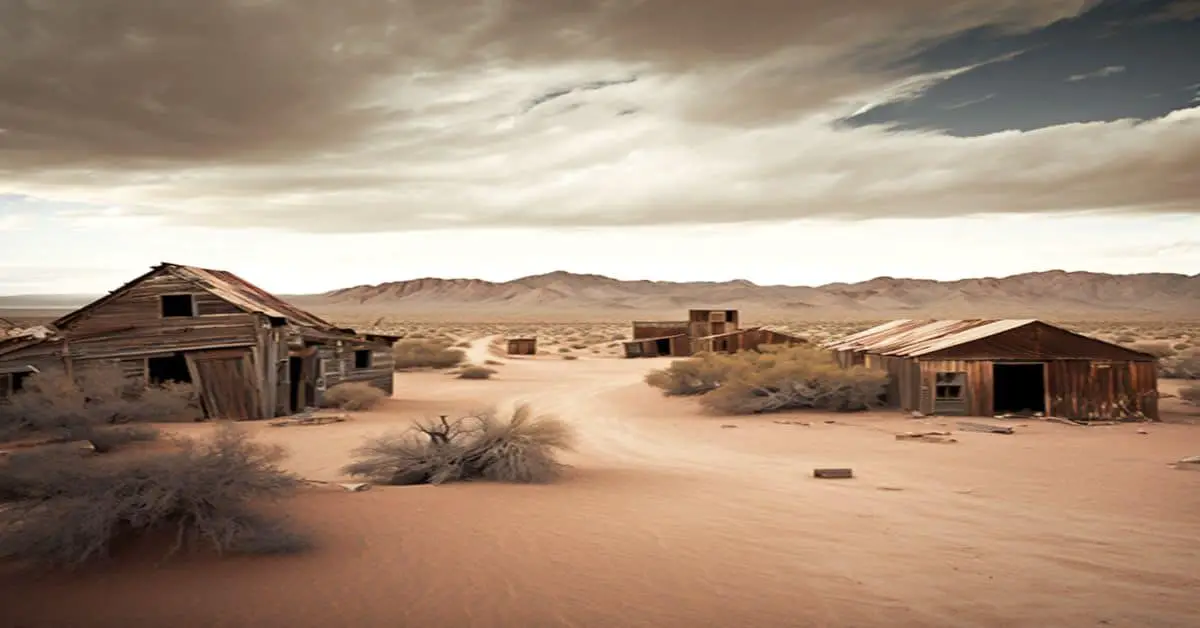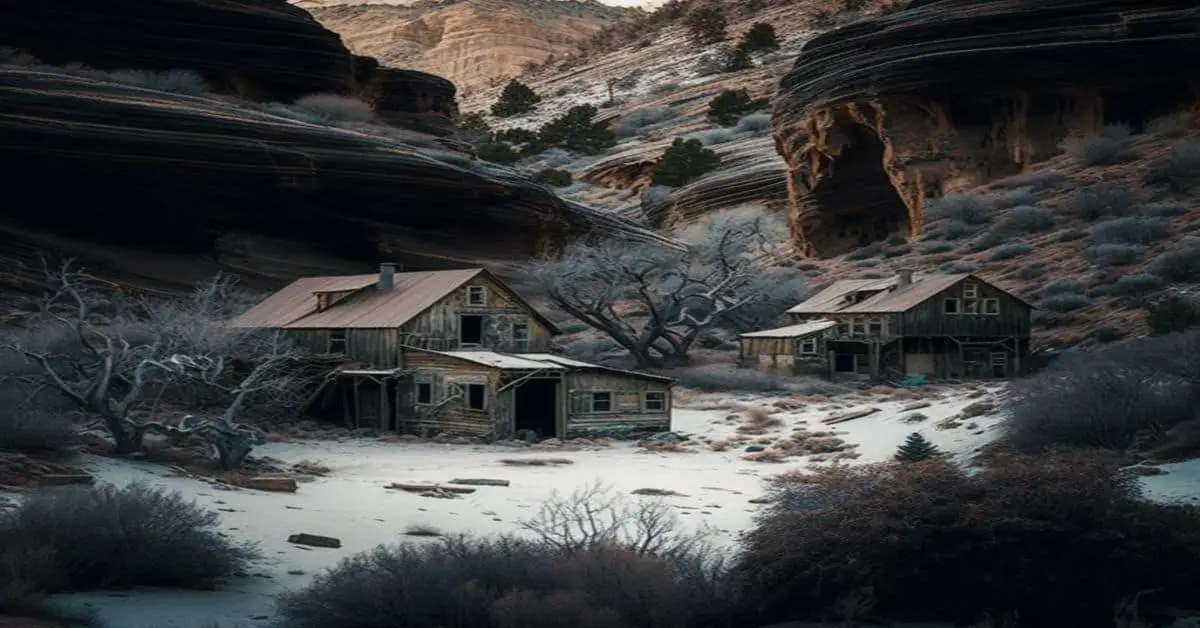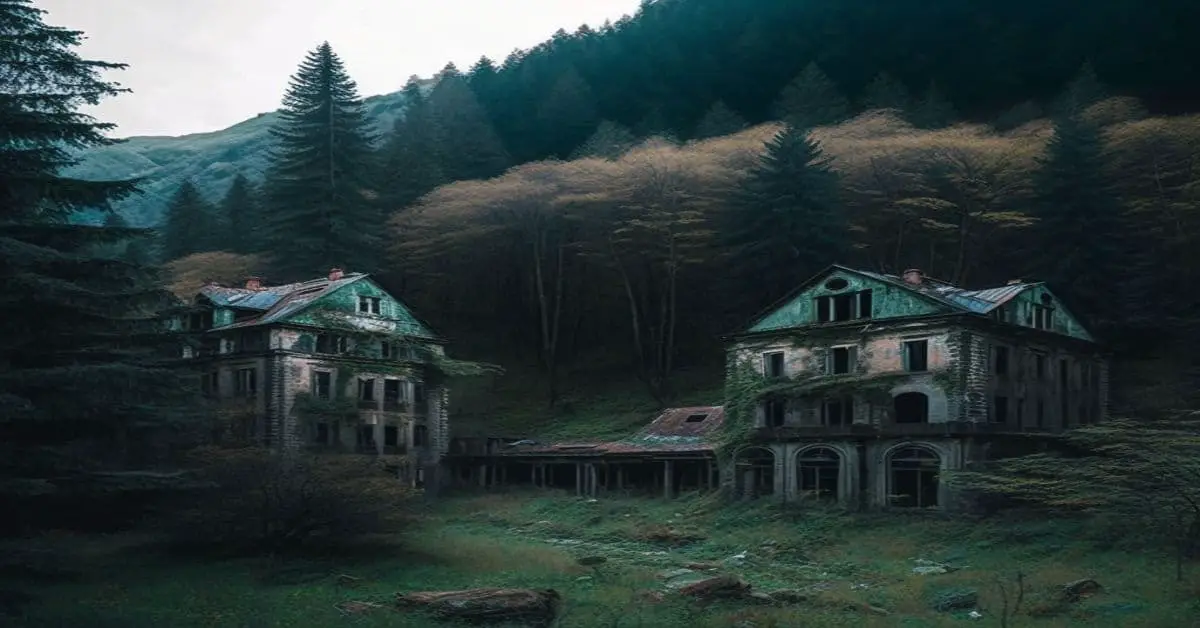As we journey through life, we often find ourselves drawn to the mysteries of the past. The abandoned town of New Chicago is a mystery, a time capsule that takes us back to the 1850s, when it was a bustling mining camp in Amador County, California.
Despite its eventual decline, the town’s remains offer a unique glimpse into a bygone era, making it a fascinating destination for history buffs and adventurers alike.
Located in a remote area of California, New Chicago is surrounded by rugged terrain and a climate that can be harsh at times. However, for those who are willing to brave the elements, the town’s remains offer a glimpse into a time when the West was still wild and untamed.
From the miner’s shacks to the old boarding house, the town’s structures are a testament to the hard work and determination of those who once called it home.
In this article, we will explore the history and remains of New Chicago and its current status as a unique historical destination.
Key Takeaways
- New Chicago was an abandoned mining town in Amador County, California, with a rich history and notable residents.
- The area is characterized by cold winters, hot summers, and abundant wildlife, offering a variety of outdoor recreational activities.
- Visitors should be careful while driving on the narrow, winding New Chicago Road.
- Although there are currently no plans for restoration, the town’s historical significance and potential for revitalization make it a potential candidate for development in the future.
Location and Climate
The location of the abandoned town of New Chicago is in Amador County, one mile east of Drytown down New Chicago Road.
The town’s climate is characterized by cold winters and hot summers.
Visitors exploring this area should come prepared for the weather conditions, especially during summer when temperatures can reach over 100°F.
Despite the harsh climate, the area is abundant in wildlife and offers various outdoor recreational activities such as hiking, camping, and fishing.
Visitors can enjoy the scenery and explore the remains of the old town while taking in the surrounding area’s natural beauty.
New Chicago Road is accessible by two-wheel-drive vehicles, making it easy for visitors to access the area.
However, visitors should be careful while driving, as the road can be narrow and winding in some places.
The area is best visited throughout the year, but visitors should take extra precautions during winter, as the roads may be icy and slippery.
Overall, the location and climate of New Chicago provide a unique experience for visitors who are interested in exploring abandoned towns and enjoying outdoor recreational activities.
History and Remains
One of the historical facts about this location is that it was once a mining camp in the 1850s built near the Gover Mine. At its peak, New Chicago was a fairly large town with about twenty houses, and notable residents such as Aaron Mason who had a boarding house and bar for the miners, and Seth Jennings who had a grocery store next to Mason’s Hotel.
Today, visitors can explore the remains of New Chicago, including several miner’s shacks, foundations, and the old boarding house. While the Malson Hotel, built in 1878, is no longer standing, its history and impact on the town are still evident.
Exploring artifacts left behind by the former residents can give insight into the daily lives of those who lived and worked in the mining town.
Current Status
Visitors to the area may be surprised to find that there are no current residents in the former mining camp of New Chicago. The town has been abandoned for decades, and the remaining structures are in various stages of decay. However, the ruins are still accessible to visitors who wish to explore the remnants of this once-thriving community.
While there are no restoration plans, the potential for revitalizing New Chicago is not entirely out of the question. The town’s historical significance and proximity to other tourist destinations make it a potential candidate for restoration and development. However, any such efforts would require significant resources and investment.
For now, the remains of New Chicago serve as a glimpse into the past, a reminder of the transient nature of boomtowns and the legacy they leave behind.
Frequently Asked Questions
What types of minerals were mined in New Chicago and how did the town’s mining industry contribute to the local economy?
New Chicago was a mining town that produced gold, silver, and copper. The mining industry played a significant role in the local economy, providing jobs and income. However, mining practices at the time had negative environmental effects, such as deforestation and water pollution.
Are there any legends or myths associated with the town of New Chicago or its abandoned buildings?
Legends and myths surround the abandoned buildings of New Chicago, including reports of haunted structures. However, no concrete evidence has been found to support these claims. Further investigation is needed to determine the veracity of these stories.
Have any famous or notable people ever visited or lived in New Chicago during its heyday?
Famous visitors to New Chicago during its heyday are not documented. Historical residents include Aaron Mason, who had a boarding house and bar for miners, and Seth Jennings, who had a grocery store next to Mason’s Hotel.
What types of wildlife can be found in the surrounding area of New Chicago today?
Wildlife sightings in the surrounding area of New Chicago include deer, coyotes, and various bird species. The ecological impact of abandoned mining sites on wildlife habitats is an ongoing concern in the region.
Are there any plans or initiatives to preserve or restore the remaining structures in New Chicago for historical or tourism purposes?
Preservation efforts for the remaining structures in New Chicago have not been identified. To date, there has been no economic impact analysis conducted to determine the feasibility of restoring the town for historical or tourism purposes.


